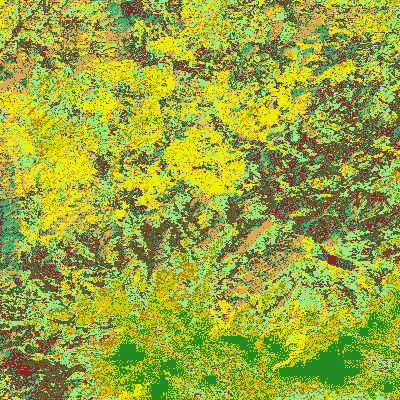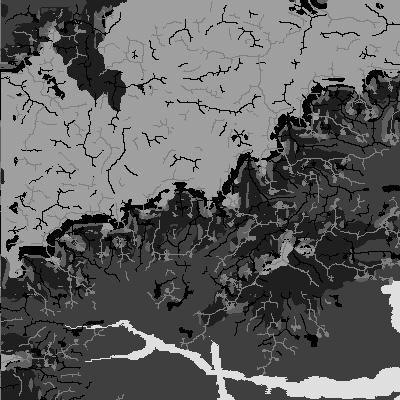 |
 |
![]()
![]()
We also applied this method to the same image of Palni hills (India). We combined
The combination uses the Dempster's orthogonal rule, and NN classification has been applied to image radiometries .
The performance of the result 54.13% (see line A in table below), is quite similar to maximum likelihood classification.
The resulting image (image 42) shows the representation of maximum certainty factors obtained by the neural networks which model expert knowledge units.
The result obtained by combining the two sources, according to the Dempster's orthogonal sum (see resulting image 43) gives an average performance which has reached 74.47%, ( see line B in table below). The result is 20.34% better than the initial NN classification and 15.87% better then the maximum likelihood classification.
We can note that the result is 2.59% better than ICARE classification.
| Class | 1 | 2 | 3 | 4 | 5 | 6 | 7 | 8 | 9 | Average |
| A(%) | 56.38 | 63.15 | 27.08 | 41.56 | 46.74 | 69.66 | 74.35 | 76.56 | 31.64 | 54.13 |
| B(%) | 82.42 | 67.58 | 69.01 | 82.19 | 83.59 | 91.28 | 80.73 | 86.20 | 27.21 | 74.47 |
Image 42: Neural networks result for image classification (without knowledge integration)


Image 43: Fusion with Dempster rule


Image 44:Visualization of the neuron approach for expert-knowledge
representation.
